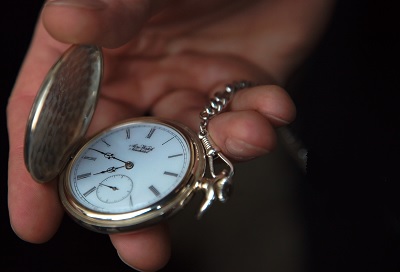Wearable technology is quickly attracting attention from people all over the world, but not necessarily the good kind of attention. Many people are criticizing wearable devices because they look unappealing and clumsy. Fashion plays a very integral role to wearable technology, as people will not wear something on their face or body if it looks foolish, no matter how useful that particular thing may be. Wearable devices have been around for centuries, however, and they often go through trends where they are considered ugly by those that would eventually use them.
The pocket watch was the world’s first piece of wearable technology. Clocks began to change the way people perceive time and conduct their daily lives during the medieval period and the technology to keep time quickly evolved into something that people could take with them. When pocket watches first began showing up, they were criticized as being somewhat useless because of the existence of normal, stationary clocks. Over time, however, these watches became a fashion symbol and etched out their place in society. Today, these watches retain some degree of social importance and are often given as gifts.
 Pocket watches eventually turned into wristwatches, which were also criticized as being somewhat useless and unattractive. During World War I, soldiers began using wristwatches to coordinate attacks in a new way, using time to measure assaults. Suddenly, these wearable gadgets became more popular and the criticism directed at them and became very popular among people throughout the world. Even today, wristwatches are considered to be some of the most fashionable accessories in the world, especially among men.
Pocket watches eventually turned into wristwatches, which were also criticized as being somewhat useless and unattractive. During World War I, soldiers began using wristwatches to coordinate attacks in a new way, using time to measure assaults. Suddenly, these wearable gadgets became more popular and the criticism directed at them and became very popular among people throughout the world. Even today, wristwatches are considered to be some of the most fashionable accessories in the world, especially among men.
Watches may not be electronic technology, but the challenges that wearable devices are facing today is almost identical to that which watches experienced in the past. Modern wearable technology may only have modest usefulness, but these devices are likely to become very popular as they begin to be considered fashionable. Being accepted as an attractive accessory could solidify the place that these devices hold in society.
Blippar demos ar game on Google’s wearable tech.
The augmented reality company has dedicated itself to finding a way to combine the digital world with the physical world and recently took another step forward toward its goal by running one of its AR games on Google Glass for the first time.
A simple game using Glass demonstrates the first steps of gesture interaction.
According to The Next Web (TNW), Blippar used Kung Food for the test. A pretty basic game that is not unlike the popular mobile game, Fruit Ninja, Kung Food revealed what playing a game on Glass could be like one day. To play, all that is required is the Blippar Glass app and a poster that is used for the game. Players use the “mouse” button on the side of Google Glass as the blasters controller. The object of the game is for players to slash at food that flies at them in 3D space to stop it from “splattering” their face.
Since the game is played with Glass, both of the player’s hands are free, which is a key point for playing the game and illustrates the start of gesturing interaction using this head mounted wearable device. Blippar CEO Ambarish Mitra said that the augmented reality gaming technology is still in its beginning stages. In the company’s short demo, the Glass device overheated within a matter of minutes of continuous use.
Although earlier this year, in February, Blippar demonstrated its AR app using Glass at Mobile World Congress, this is the first time that is has been demoed as a gaming platform.
Blippar is not limiting its augmented reality technology to gaming.
“Our ambition is to build a browser where you just look at things and you get spontaneous information, whether that’s some [sort of] utility or something entertaining… When we think of mobile we don’t define mobility and restrict it to your mobile device itself. Mobility is a lifestyle choice,” Mitra said.
The company’s vision extends beyond augmented reality mobile entertainment. It wants users of mobile devices to have an optional layer of information available to them whenever they need or want it, whether it is looking at products to obtain additional information or to play a game when they are looking to amuse themselves for a few minutes.
 Pocket watches eventually turned into wristwatches, which were also criticized as being somewhat useless and unattractive. During World War I, soldiers began using wristwatches to coordinate attacks in a new way, using time to measure assaults. Suddenly, these wearable gadgets became more popular and the criticism directed at them and became very popular among people throughout the world. Even today, wristwatches are considered to be some of the most fashionable accessories in the world, especially among men.
Pocket watches eventually turned into wristwatches, which were also criticized as being somewhat useless and unattractive. During World War I, soldiers began using wristwatches to coordinate attacks in a new way, using time to measure assaults. Suddenly, these wearable gadgets became more popular and the criticism directed at them and became very popular among people throughout the world. Even today, wristwatches are considered to be some of the most fashionable accessories in the world, especially among men.

